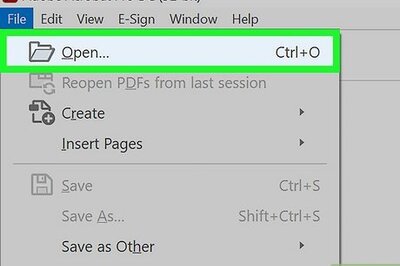
views
- Shadow work examines your deepest, innermost self by asking and answering difficult, personal questions like, “What are my values?”
- Keep a shadow work journal to write down your prompt answers. This way, you can turn back to it in times of uncertainty for insight into your most intimate self.
- Shadow work can be emotionally strenuous. Be sure to listen to your body and take a break when needed—Rome wasn’t built in a day!

Shadow work examines your inner self to promote healing and growth. Shadow work is all about looking inwards at the dark places we keep to ourselves and often push out of the way. By asking and answering difficult questions like, “Why am I so afraid of change?” we can better understand and push ourselves to overcome the hurdles that may be holding us back. Shadow work can be very emotionally taxing. Remember to be kind to yourself and stop when needed—you can always return to your prompt another day when you feel stronger! Meditating before starting your shadow work may help to put you in a better, more receptive headspace.

Shadow work focuses on the “shadow self” or the subconscious mind. As the name suggests, the “shadow self” is like a misty burial ground for parts of our personality (traits, emotions, and thoughts or memories) that we’ve repressed or hidden away, sometimes due to trauma. Through shadow work, memories and truths from your subconscious mind are brought forward to the conscious mind, making healing and growth possible through hard-won self-discovery and personal insights. Have you ever felt confused by your own actions, feelings, or thoughts? By better understanding the secret hideaways in your own mind, you'll get to know yourself more deeply. And with shadow work, to know is to love! Through these exercises, you'll start to develop a clearer and more sympathetic sense of yourself. And the more developed this understanding becomes, the more positive effect you'll see in you're likely to see in your life. Bring forth your shadow self by considering your insecurities and why you think they came to be.




















Comments
0 comment